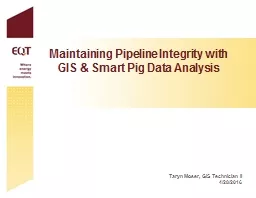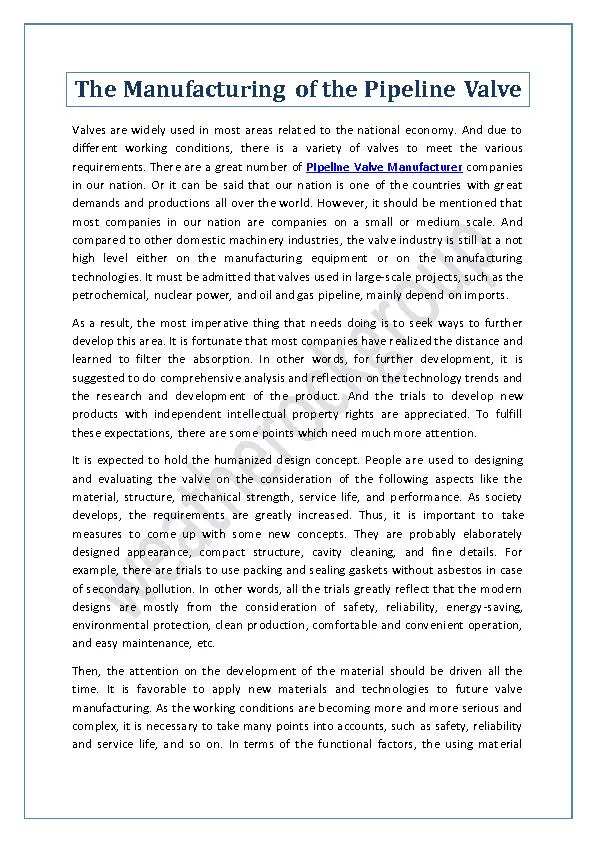PPT-Maintaining Pipeline Integrity with
Author : lindy-dunigan | Published Date : 2017-05-18
GIS amp Smart Pig Data Analysis Taryn Moser GIS Technician II 4282016 One of Appalachias leading natural gas EampP companies 125 years successful operations
Presentation Embed Code
Download Presentation
Download Presentation The PPT/PDF document "Maintaining Pipeline Integrity with" is the property of its rightful owner. Permission is granted to download and print the materials on this website for personal, non-commercial use only, and to display it on your personal computer provided you do not modify the materials and that you retain all copyright notices contained in the materials. By downloading content from our website, you accept the terms of this agreement.
Maintaining Pipeline Integrity with: Transcript
Download Rules Of Document
"Maintaining Pipeline Integrity with"The content belongs to its owner. You may download and print it for personal use, without modification, and keep all copyright notices. By downloading, you agree to these terms.
Related Documents














